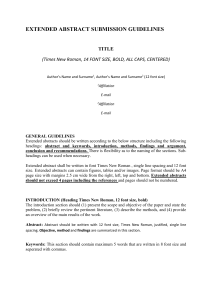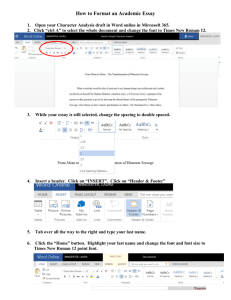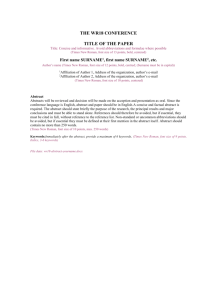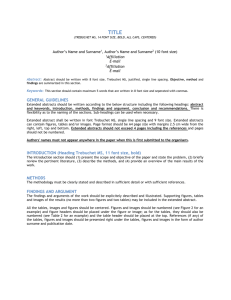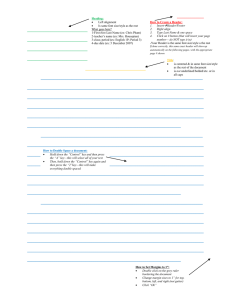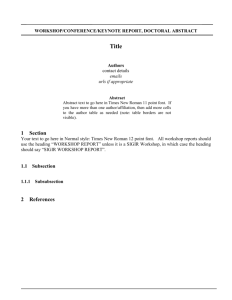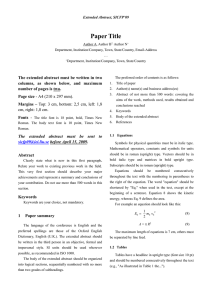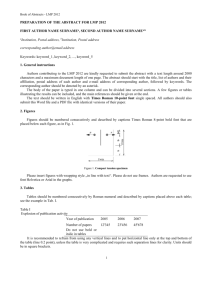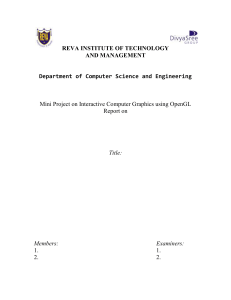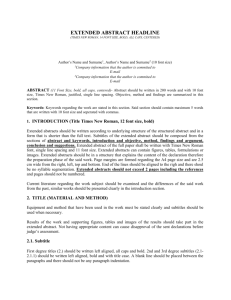Extended Abstract Template: Academic Paper Guidelines
advertisement
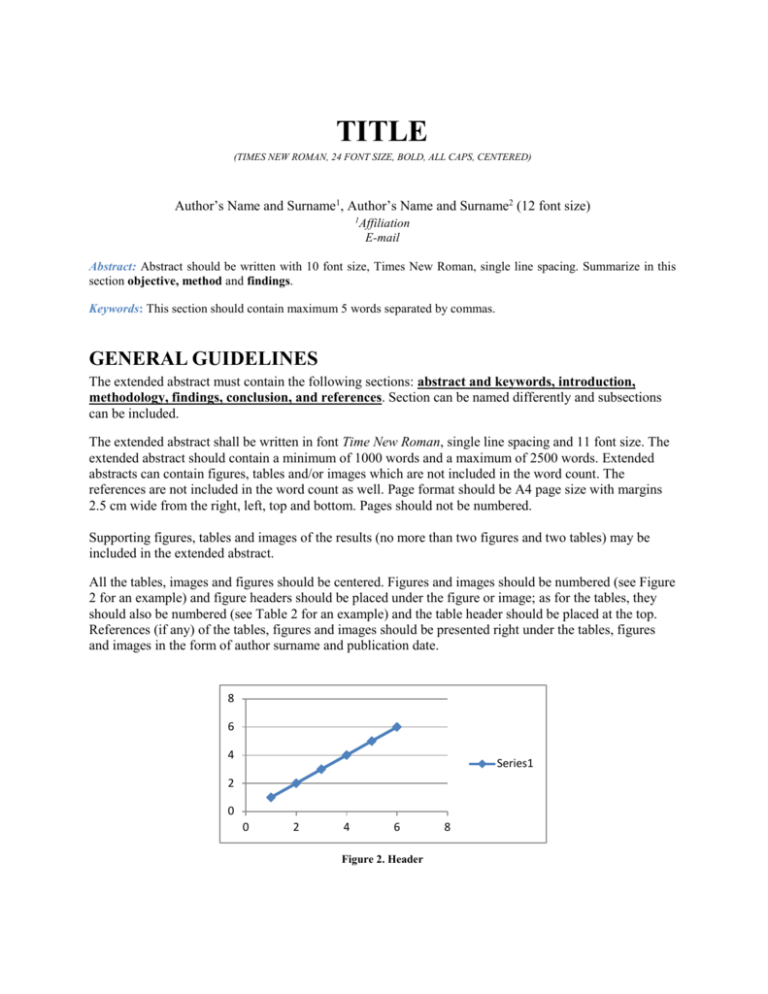
TITLE (TIMES NEW ROMAN, 24 FONT SIZE, BOLD, ALL CAPS, CENTERED) Author’s Name and Surname1, Author’s Name and Surname2 (12 font size) 1 Affiliation E-mail Abstract: Abstract should be written with 10 font size, Times New Roman, single line spacing. Summarize in this section objective, method and findings. Keywords: This section should contain maximum 5 words separated by commas. GENERAL GUIDELINES The extended abstract must contain the following sections: abstract and keywords, introduction, methodology, findings, conclusion, and references. Section can be named differently and subsections can be included. The extended abstract shall be written in font Time New Roman, single line spacing and 11 font size. The extended abstract should contain a minimum of 1000 words and a maximum of 2500 words. Extended abstracts can contain figures, tables and/or images which are not included in the word count. The references are not included in the word count as well. Page format should be A4 page size with margins 2.5 cm wide from the right, left, top and bottom. Pages should not be numbered. Supporting figures, tables and images of the results (no more than two figures and two tables) may be included in the extended abstract. All the tables, images and figures should be centered. Figures and images should be numbered (see Figure 2 for an example) and figure headers should be placed under the figure or image; as for the tables, they should also be numbered (see Table 2 for an example) and the table header should be placed at the top. References (if any) of the tables, figures and images should be presented right under the tables, figures and images in the form of author surname and publication date. 8 6 4 Series1 2 0 0 2 4 6 Figure 2. Header 8 Table 2. Header Reference: author surname and publication date INTRODUCTION (Times New Roman, 16 font size, bold, all caps) The introduction section should (1) present the scope and objective of the paper and state the problem, (2) briefly review the pertinent literature, (3) describe the methods, and (4) provide an overview of the main results of the work. METHODOLOGY The methodology must be clearly stated and described in sufficient detail or with sufficient references. The author shall explain the research question, describe the research framework, and the methods applied in detail. It should be furthermore highlighted why the research question is relevant to theory and practice, and why the chosen method(s) are suited for the problem. FINDINGS The arguments and findings are described in detail in this section. CONCLUSIONS Conclusions should include (1) the principles and generalisations inferred from the results, (2) any exceptions, problems or limitations of the work, (3) theoretical and/or practical implications of the work, and (5) conclusions drawn and recommendations. REFERENCES References should be listed in alphabetical order and presented in a a format according to the Chicago Manual of Style: http://www.chicagomanualofstyle.org/tools_citationguide.html.
